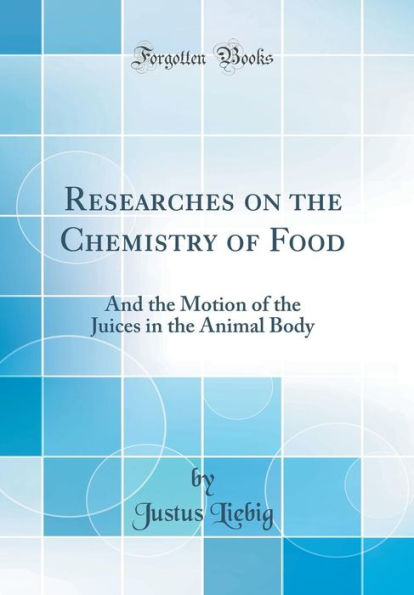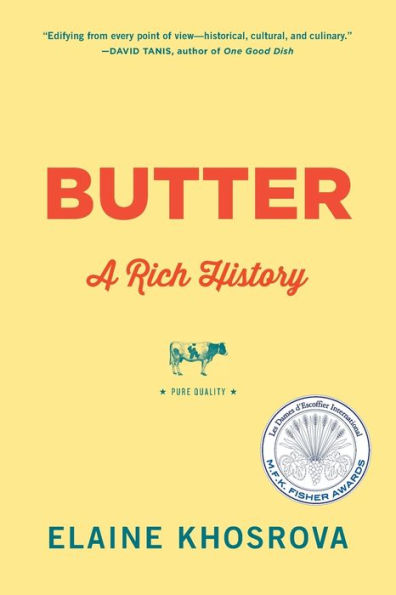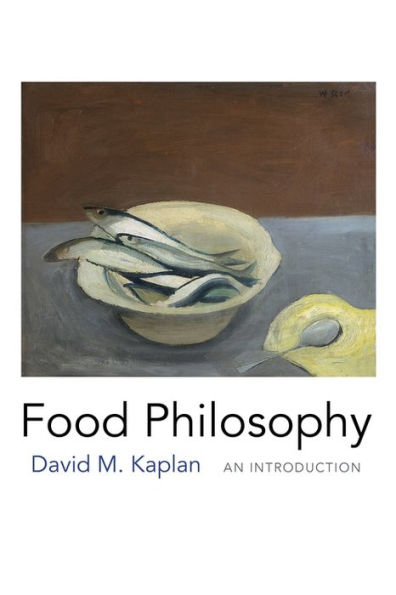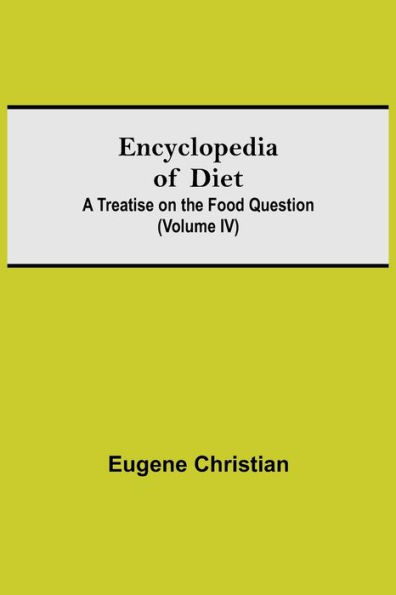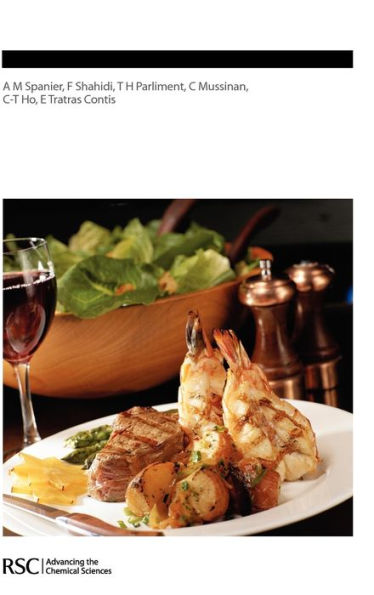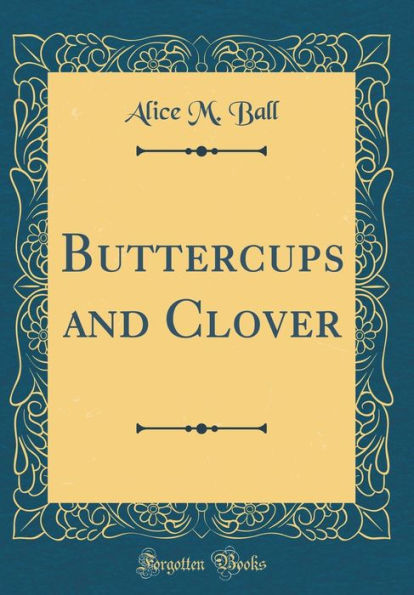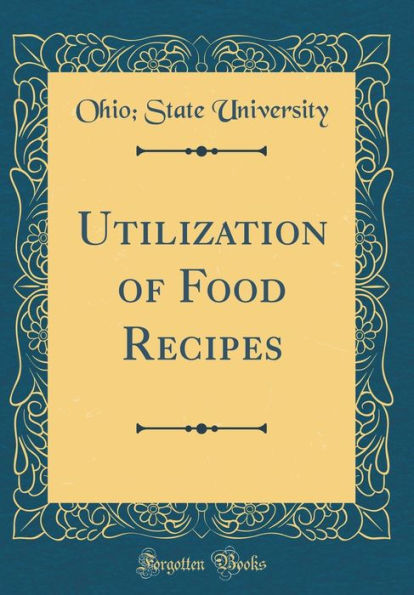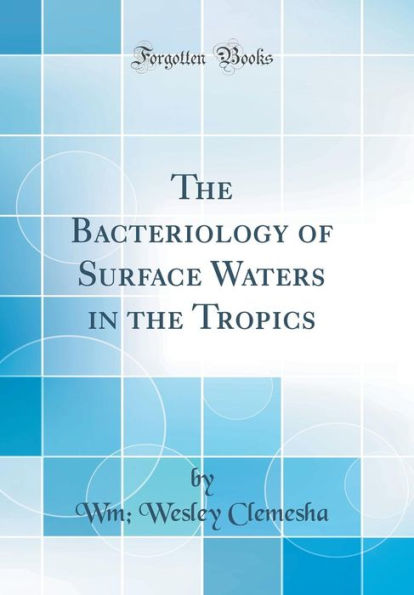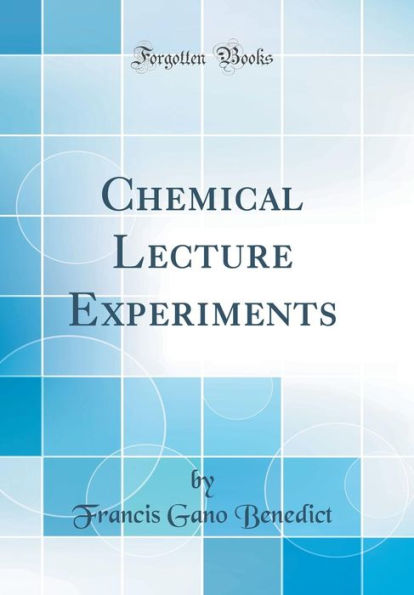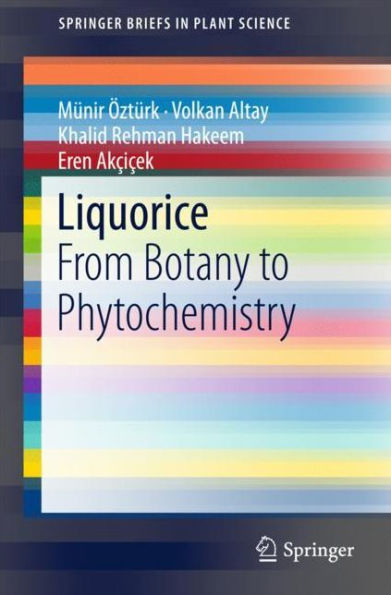Home
The Lecithin Content of Butter and Its Possible Relationship to the Fishy Flavor: A Thesis Presented to the Faculty of the Graduate School of Cornell University for the Degree of Doctor of Philosophy (Classic Reprint)
Barnes and Noble
Loading Inventory...
The Lecithin Content of Butter and Its Possible Relationship to the Fishy Flavor: A Thesis Presented to the Faculty of the Graduate School of Cornell University for the Degree of Doctor of Philosophy (Classic Reprint) in Bloomington, MN
Current price: $25.24

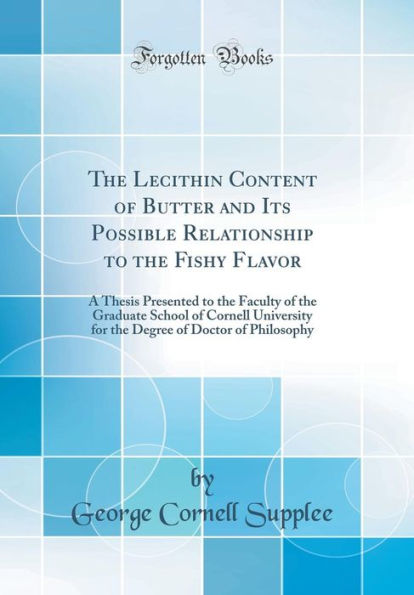
The Lecithin Content of Butter and Its Possible Relationship to the Fishy Flavor: A Thesis Presented to the Faculty of the Graduate School of Cornell University for the Degree of Doctor of Philosophy (Classic Reprint) in Bloomington, MN
Current price: $25.24
Loading Inventory...
Size: OS
Excerpt from The Lecithin Content of Butter and Its Possible Relationship to the Fishy Flavor: A Thesis Presented to the Faculty of the Graduate School of Cornell University for the Degree of Doctor of Philosophy
Harding, Rogers, and Smith report the fishy flavor in a sample of milk brought to the New York State Agricultural Experiment Station at Geneva in 1900 The source was traced to a single animal in the herd, but investigation failed to locate any pathological condition or any irregularity in the feeding which might cause the trouble. Attempts to reproduce the flavor by inoculating milk with bacteria isolated from this cow's udder also failed. The same authors mention also an instance brought to their attention by W. E. Griffith, in which a peculiar flavor developed in J un-e butter after storage at 18° to 22° F. This flavor was described by butter experts as fishy.
Piffard (1901) discusses the fishy flavor in dairy products, and suggests the possible relation-ship between certain algae found in stagnant water, and fishiness in milk and butter. His theory is supported by the fact that the flavor is often produced in water by the growth of algae and diatoms, and he believes, therefore, that cows having access to such water may transmit the condition to milk. Referring to the flavor in butter, he considers the idea that salt may be responsible and mentions the ability of salt to absorb flavors and odors of materials stored near it.
About the Publisher
Forgotten Books publishes hundreds of thousands of rare and classic books. Find more at www.forgottenbooks.com
This book is a reproduction of an important historical work. Forgotten Books uses state-of-the-art technology to digitally reconstruct the work, preserving the original format whilst repairing imperfections present in the aged copy. In rare cases, an imperfection in the original, such as a blemish or missing page, may be replicated in our edition. We do, however, repair the vast majority of imperfections successfully; any imperfections that remain are intentionally left to preserve the state of such historical works.
Harding, Rogers, and Smith report the fishy flavor in a sample of milk brought to the New York State Agricultural Experiment Station at Geneva in 1900 The source was traced to a single animal in the herd, but investigation failed to locate any pathological condition or any irregularity in the feeding which might cause the trouble. Attempts to reproduce the flavor by inoculating milk with bacteria isolated from this cow's udder also failed. The same authors mention also an instance brought to their attention by W. E. Griffith, in which a peculiar flavor developed in J un-e butter after storage at 18° to 22° F. This flavor was described by butter experts as fishy.
Piffard (1901) discusses the fishy flavor in dairy products, and suggests the possible relation-ship between certain algae found in stagnant water, and fishiness in milk and butter. His theory is supported by the fact that the flavor is often produced in water by the growth of algae and diatoms, and he believes, therefore, that cows having access to such water may transmit the condition to milk. Referring to the flavor in butter, he considers the idea that salt may be responsible and mentions the ability of salt to absorb flavors and odors of materials stored near it.
About the Publisher
Forgotten Books publishes hundreds of thousands of rare and classic books. Find more at www.forgottenbooks.com
This book is a reproduction of an important historical work. Forgotten Books uses state-of-the-art technology to digitally reconstruct the work, preserving the original format whilst repairing imperfections present in the aged copy. In rare cases, an imperfection in the original, such as a blemish or missing page, may be replicated in our edition. We do, however, repair the vast majority of imperfections successfully; any imperfections that remain are intentionally left to preserve the state of such historical works.
Excerpt from The Lecithin Content of Butter and Its Possible Relationship to the Fishy Flavor: A Thesis Presented to the Faculty of the Graduate School of Cornell University for the Degree of Doctor of Philosophy
Harding, Rogers, and Smith report the fishy flavor in a sample of milk brought to the New York State Agricultural Experiment Station at Geneva in 1900 The source was traced to a single animal in the herd, but investigation failed to locate any pathological condition or any irregularity in the feeding which might cause the trouble. Attempts to reproduce the flavor by inoculating milk with bacteria isolated from this cow's udder also failed. The same authors mention also an instance brought to their attention by W. E. Griffith, in which a peculiar flavor developed in J un-e butter after storage at 18° to 22° F. This flavor was described by butter experts as fishy.
Piffard (1901) discusses the fishy flavor in dairy products, and suggests the possible relation-ship between certain algae found in stagnant water, and fishiness in milk and butter. His theory is supported by the fact that the flavor is often produced in water by the growth of algae and diatoms, and he believes, therefore, that cows having access to such water may transmit the condition to milk. Referring to the flavor in butter, he considers the idea that salt may be responsible and mentions the ability of salt to absorb flavors and odors of materials stored near it.
About the Publisher
Forgotten Books publishes hundreds of thousands of rare and classic books. Find more at www.forgottenbooks.com
This book is a reproduction of an important historical work. Forgotten Books uses state-of-the-art technology to digitally reconstruct the work, preserving the original format whilst repairing imperfections present in the aged copy. In rare cases, an imperfection in the original, such as a blemish or missing page, may be replicated in our edition. We do, however, repair the vast majority of imperfections successfully; any imperfections that remain are intentionally left to preserve the state of such historical works.
Harding, Rogers, and Smith report the fishy flavor in a sample of milk brought to the New York State Agricultural Experiment Station at Geneva in 1900 The source was traced to a single animal in the herd, but investigation failed to locate any pathological condition or any irregularity in the feeding which might cause the trouble. Attempts to reproduce the flavor by inoculating milk with bacteria isolated from this cow's udder also failed. The same authors mention also an instance brought to their attention by W. E. Griffith, in which a peculiar flavor developed in J un-e butter after storage at 18° to 22° F. This flavor was described by butter experts as fishy.
Piffard (1901) discusses the fishy flavor in dairy products, and suggests the possible relation-ship between certain algae found in stagnant water, and fishiness in milk and butter. His theory is supported by the fact that the flavor is often produced in water by the growth of algae and diatoms, and he believes, therefore, that cows having access to such water may transmit the condition to milk. Referring to the flavor in butter, he considers the idea that salt may be responsible and mentions the ability of salt to absorb flavors and odors of materials stored near it.
About the Publisher
Forgotten Books publishes hundreds of thousands of rare and classic books. Find more at www.forgottenbooks.com
This book is a reproduction of an important historical work. Forgotten Books uses state-of-the-art technology to digitally reconstruct the work, preserving the original format whilst repairing imperfections present in the aged copy. In rare cases, an imperfection in the original, such as a blemish or missing page, may be replicated in our edition. We do, however, repair the vast majority of imperfections successfully; any imperfections that remain are intentionally left to preserve the state of such historical works.
